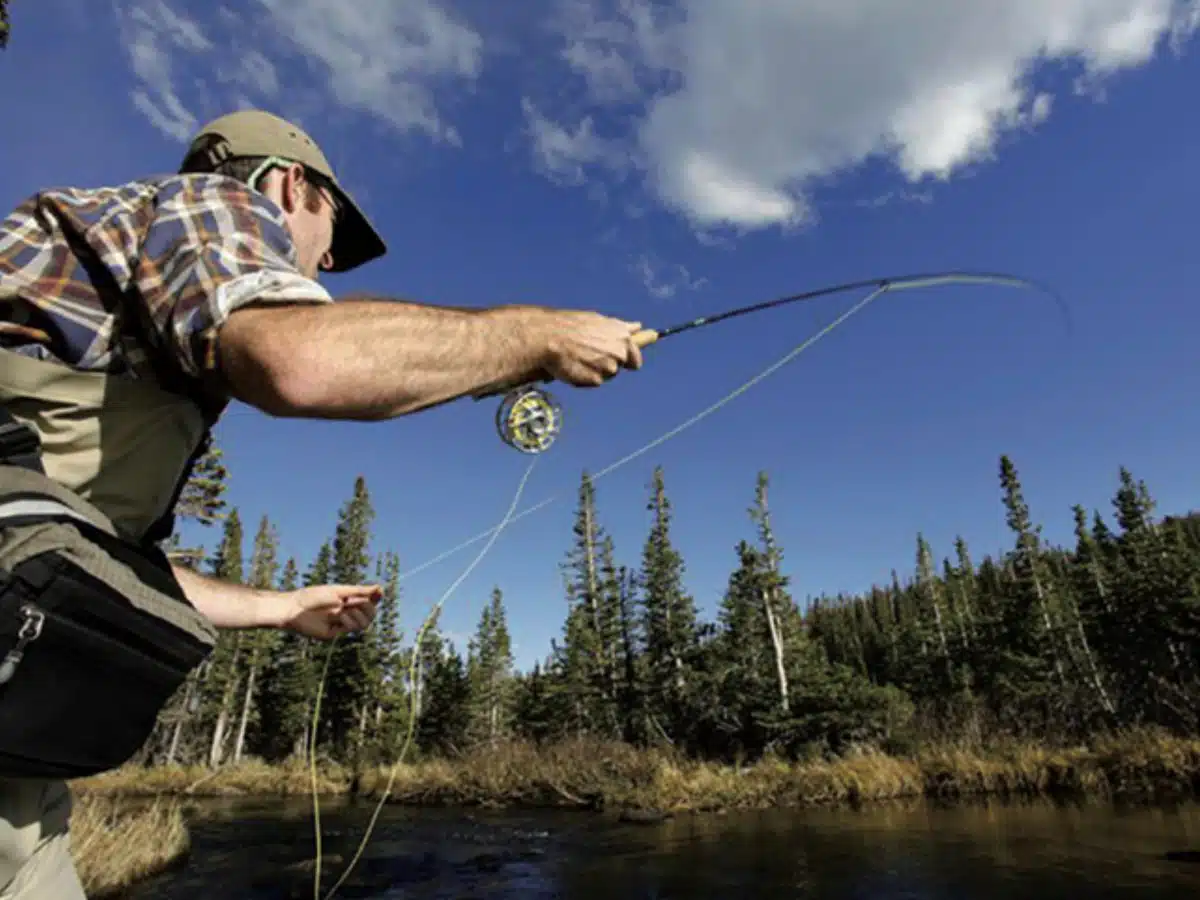If you want to get started with fishing to the fly or if you are simply curious, read this article to learn more about this sport fishing, which is growing in popularity.


This article was produced in collaboration with Hooké.
Some facts about trout
Trout is generally a species that lives in fresh water and belongs to the large family Salmonidae.
When mature, it measures 30 to 50 cm depending on the species and lives in clear, cool waters with little current.
Among the most popular species known under different names (put in parentheses) are:
- Rainbow trout (silver trout);
- Brown trout (German trout);
- Brook trout (speckled trout, sea trout);
- Arctic char (red trout from Quebec);
- Lake trout (gray trout or lake trout).
Planning for Fly Fishing for Trout
The trout fly fishing season in Quebec
The trout fly fishing period generally opens at the end of April and closes in mid-September in the majority of areas of Quebec.
In order to properly prepare yourself for this popular fishing in Quebec, it is important to find out about the different species found in the province's watering holes; whether it is brook trout (speckled trout), rainbow trout or brown trout.
Also take the time to analyze the times of day when fishing is more successful. Is it dusk or dawn?
Trout eating habits
First of all, you should know that when fly fishing for trout, it is essential to know the diet of the target species in order to properly select the fly with which we are working.
Although there are no certainties, there are some basic principles you can rely on to increase your chances of catching a trout. Study the insects that inhabit waterways and learn about their life cycles so that you can imitate current hatchings, depending on the time of day. This is the time to sharpen your sense of observation, by analyzing the surface of the water or at the edge of the water point you are fishing.
Also note that trout feed when there is a change in atmospheric pressure in the air, i.e. when the sun rises or sets, as this creates a drop or rise in temperature.
Mostly carnivorous, trout feed on small fish, insects, leeches or crustaceans, and their diet varies depending on the species.
For example :
- Rainbow trout particularly like plankton, crustaceans, insects, slugs, leeches, small fish and fish eggs.
- As for brown trout, they like to feed on fish, crayfish and insects at dusk.
- Finally, brook trout (also called speckled trout) rush towards leeches, worms, molluscs, crustaceans, insects, spiders and small fish.
This is why it is important to study the species you want to fish in order to properly target their needs and adapt your lures and fishing techniques from trout to fly fishing.
Basic equipment for fly fishing for trout
Furthermore, rely on the advice of Mathieu Leonard, fly fishing instructor and Hooké ambassador, who will teach you more about the necessary equipment to use when fly fishing for trout.
It favors streamer fishing allowing long casts and which is very active. Nymph fishing is also recommended, as it imitates the insect hatching of the moment and is quite effective.
The fishing rod, line and flies for fishing from trout to nymph flies
Here's what you'll need:
- A nymph fishing rod: choose a 10-foot (304.8 cm) trout fly fishing rod no 6.
- A line for nymph fishing: combine your line with your rod by opting for a lineo 6.
- A reel suitable for this rod (depending on weight and line).
- A leader (commonly called the “leader”) that you will attach to the end of your line to secure the fly). Opt for a 12-foot (365.8 cm) 6-lb fluororcarbon leader for nymph fishing.
- Flies: several nymphs
The fishing rod, line and flies for fly fishing for trout streamer
Here's what you'll need:
- A 9-foot (274 cm) streamer fishing rodo 6.
- A silk no 6 intermediate to get more depth.
- A reel suitable for this rod (depending on weight and line).
- A 12 to 15 foot (365.8 to 457.2 cm) 6 lb fluororcarbon leader.
- A streamer fly with a standard knot.
Other essentials for fly fishing for trout
There are a host of accessories on the market and they all have their uses:
- Fishing waders commonly called “waders” so you can move easily in the water;
- A good waterproof rain coat;
- Polarized sunglasses to protect your eyes from the sun's rays and flies;
- A flotation vest (PFD);
- A landing net;
- Pliers or wire cutters
- A spool of leader;
- Insect repellent;
- A provincial fishing license;
- A right of access for the river or lake where you fish.
Burst Tips for Fly Fishing for Trout
- You can install more than one nymph on your leader leaving about 6 inches (15 cm) between each. This allows you to fish at different depths to determine how high the trout are swimming.
- You can also try dry fly fishing. This technique is quite easy, as you don't need to gauge the depth of the water.
- Always have several flies, nymphs and streamers of different sizes and colors on hand to adapt to the feeding of trout during the day and time of year.
Handling Mounting And Unmounting Of Given Navigation Routes In React Native
—Johnny M. Martin


